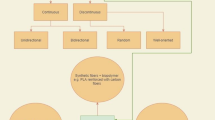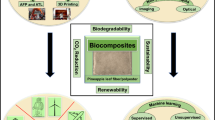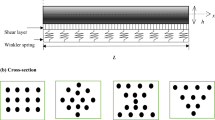Abstract
Variable stiffness (VS) composites made by fiber steering have received intensive attention due to the tailorability of the stiffness and strength properties. However, a significantly larger number of elements are required to converge for VS composites, which results in much longer runtime and makes the design and optimization more complicated. In this paper, an efficient design optimization method assisted by multi-fidelity surrogate models is presented for the buckling design of VS composites. To reduce the computational burden, a multi-fidelity surrogate model called hierarchical Kriging is constructed through a few expensive high-fidelity samples and many cheap low-fidelity samples. Fine and coarse finite element (FE) analysis is performed respectively to calculate the structural responses for corresponding datasets. The efficient global optimization based on a modified expected improvement criterion is employed and used to adaptively add new samples of variable-fidelity. Two case studies, a composite plate subjected to uniform uniaxial compression and a composite cylinder under pure bending, are investigated. The effects of different number of design variables and coarse FE model mesh density on the optimum configuration are studied to demonstrate the effectiveness and robustness of the method. The results indicate that the present method can remarkably reduce the number of high-fidelity FE evaluations and improve the optimization efficiency when compared with available methods in the literature. Additionally, the investigation in the mechanism of loading carrying capacity improvement shows that the increase is mainly due to the load redistribution.























Similar content being viewed by others
References
Abdalla MM, Setoodeh S, Gürdal Z (2007) Design of variable stiffness composite panels for maximum fundamental frequency using lamination parameters. Compos Struct 81:283–291
Albazzan MA, Harik R, Tatting BF, Gürdal Z (2019) Efficient design optimization of nonconventional laminated composites using lamination parameters: a state of the art. Compos Struct 209:362–374
Alhajahmad A, Abdalla MM, Gürdal Z (2008) Design tailoring for pressure pillowing using tow-placed steered fibers. J Aircr 45:630–640
Alhajahmad A, Abdalla MM, Gürdal Z (2010) Optimal design of tow-placed fuselage panels for maximum strength with buckling considerations. J Aircr 47:775–782
Arian Nik M, Fayazbakhsh K, Pasini D, Lessard L (2012) Surrogate-based multi-objective optimization of a composite laminate with curvilinear fibers. Compos Struct 94:2306–2313
Arian Nik M, Fayazbakhsh K, Pasini D, Lessard L (2014a) Optimization of variable stiffness composites with embedded defects induced by automated fiber placement. Compos Struct 107:160–166
Arian Nik M, Fayazbakhsh K, Pasini D, Lessard L (2014b) A comparative study of metamodeling methods for the design optimization of variable stiffness composites. Compos Struct 107:494–501
Barbero EJ (2013) Finite element analysis of composite materials using Abaqus. CRC Press
Blom AW, Setoodeh S, Hol JMAM, Gürdal Z (2008) Design of variable-stiffness conical shells for maximum fundamental eigenfrequency. Comput Struct 86:870–878
Blom AW, Stickler PB, Gürdal Z (2010) Optimization of a composite cylinder under bending by tailoring stiffness properties in circumferential direction. Compos Part B Eng 41:157–165
Forrester AIJ, Sóbester A, Keane AJ (2007) Multi-fidelity optimization via surrogate modelling. Proc R Soc A Math Phys Eng Sci 463:3251–3269
Ghayoor H, Rouhi M, Hoa SV, Hojjati M (2017) Use of curvilinear fibers for improved bending-induced buckling capacity of elliptical composite cylinders. Int J Solids Struct 109:112–122
Ghiasi H, Fayazbakhsh K, Pasini D, Lessard L (2010) Optimum stacking sequence design of composite materials part II: variable stiffness design. Compos Struct 93:1–13
Gürdal Z, Olmedo R (1993) In-plane response of laminates with spatially varying fiber orientations-variable stiffness concept. AIAA J 31:751–758
Gürdal Z, Tatting BF, Wu CK (2008) Variable stiffness composite panels: effects of stiffness variation on the in-plane and buckling response. Compos Part A Appl Sci Manuf 39:911–922
Han Z-H, Görtz S (2012) Hierarchical Kriging model for variable-fidelity surrogate modelling. AIAA J 50:1885–1896
Hao P, Liu D, Wang Y et al (2019) Design of manufacturable fiber path for variable-stiffness panels based on lamination parameters. Compos Struct 219:158–169
Hyer MW, Lee HH (1991) The use of curvilinear fiber format to improve buckling resistance of composite plates with central circular holes. Compos Struct 18:239–261
IJsselmuiden ST, Abdalla MM, Gurdal Z (2010) Optimization of variable-stiffness panels for maximum buckling load using lamination parameters. AIAA J 48:134–143
Jones DR, Schonlau M, Welch WJ (1998) Efficient global optimization of expensive black-box functions. J Glob Optim 13:455–492
Keane A, Forrester A, Sobester A (2008) Engineering design via surrogate modelling: a practical guide. American Institute of Aeronautics and Astronautics, Inc., Washington, DC
Khani A, Ijsselmuiden ST, Abdalla MM, Gürdal Z (2011) Design of variable stiffness panels for maximum strength using lamination parameters. Compos Part B Eng 42:546–552
Khani A, Abdalla MM, Gürdal Z (2012) Circumferential stiffness tailoring of general cross section cylinders for maximum buckling load with strength constraints. Compos Struct 94:2851–2860
Khani A, Abdalla MM, Gürdal Z (2015) Optimum tailoring of fibre-steered longitudinally stiffened cylinders. Compos Struct 122:343–351
Le Chau N, Dao T-P, Dang VA (2020) An efficient hybrid approach of improved adaptive neural fuzzy inference system and teaching learning-based optimization for design optimization of a jet pump-based thermoacoustic-Stirling heat engine. Neural Comput Appl 32:7259–7273
Li E (2017) Fast cylinder variable-stiffness design by using Kriging-based hybrid aggressive space mapping method. Adv Eng Softw 114:215–226
Martin JD, Simpson TW (2004) On the use of Kriging models to approximate deterministic computer models. In: Volume 1: 30th Design Automation Conference. ASME, pp 481–492
Morris MD, Mitchell TJ (1995) Exploratory designs for computational experiments. J Stat Plan Inference 43:381–402
Mukaka MM (2012) Statistics corner: a guide to appropriate use of correlation coefficient in medical research. Malawi Med J 24:69–71
Nguyen DN, Dao T-P, Le Chau N, Dang VA (2019) Hybrid approach of finite element method, Kigring metamodel, and multiobjective genetic algorithm for computational optimization of a flexure elbow joint for upper-limb assistive device. Complexity 2019:1–13. https://doi.org/10.1155/2019/3231914
Parnas L, Oral S, Ceyhan Ü (2003) Optimum design of composite structures with curved fiber courses. Compos Sci Technol 63:1071–1082
Passos AG, Luersen MA (2018) Multiobjective optimization of laminated composite parts with curvilinear fibers using Kriging-based approaches. Struct Multidiscip Optim 57:1115–1127
Passos AG, Luersen MA, Steeves CA (2017) Optimal curved fibre orientations of a composite panel with cutout for improved buckling load using the Efficient Global Optimization algorithm. Eng Optim 49:1354–1372
Rouhi M, Ghayoor H, Hoa SV, Hojjati M (2014) Effect of structural parameters on design of variable-stiffness composite cylinders made by fiber steering. Compos Struct 118:472–481
Rouhi M, Ghayoor H, Hoa SV, Hojjati M (2015) Multi-objective design optimization of variable stiffness composite cylinders. Compos Part B Eng 69:249–255
Rouhi M, Ghayoor H, Hoa SV et al (2016) Stiffness tailoring of elliptical composite cylinders for axial buckling performance. Compos Struct 150:115–123
Rouhi M, Ghayoor H, Hoa SV, Hojjati M (2017) Computational efficiency and accuracy of multi-step design optimization method for variable stiffness composite structures. Thin-Walled Struct 113:136–143
Sabido A, Bahamonde L, Harik R, van Tooren MJL (2017) Maturity assessment of the laminate variable stiffness design process. Compos Struct 160:804–812
Sacks J, Welch WJ, Mitchell TJ, Wynn HP (1989) Design and analysis of computer experiments. Stat Sci 4:409–423
Schober P, Schwarte LA (2018) Correlation coefficients: appropriate use and interpretation. Anesth Analg 126:1763–1768
Setoodeh S, Abdalla MM, Gürdal Z (2006) Design of variable-stiffness laminates using lamination parameters. Compos Part B Eng 37:301–309
Setoodeh S, Abdalla MM, IJsselmuiden ST, Gürdal Z (2009) Design of variable-stiffness composite panels for maximum buckling load. Compos Struct 87:109–117
Simpson TW, Mauery TM, Korte JJ, Mistree F (2001) Kriging models for global approximation in simulation-based multidisciplinary design optimization. AIAA J 39:2233–2241
Stegmann J, Lund E (2005) Discrete material optimization of general composite shell structures. Int J Numer Methods Eng 62:2009–2027
Sun M, Hyer MW (2008) Use of material tailoring to improve buckling capacity of elliptical composite cylinders. AIAA J 46:770–782
Tian K, Li Z, Ma X, et al (2020) Toward the robust establishment of variable-fidelity surrogate models for hierarchical stiffened shells by two-step adaptive updating approach. Struct Multidiscip Optim 61:1515–1528
Toal DJJ, Bressloff NW, Keane AJ (2008) Kriging hyperparameter tuning strategies. AIAA J 46:1240–1252
Van Campen JMJF, Kassapoglou C, Gürdal Z (2012) Generating realistic laminate fiber angle distributions for optimal variable stiffness laminates. Compos Part B Eng 43:354–360
Wu Z, Weaver PM, Raju G, Chul Kim B (2012) Buckling analysis and optimisation of variable angle tow composite plates. Thin-Walled Struct 60:163–172
Wu Z, Raju G, Weaver PM (2015) Framework for the buckling optimization of variable-angle tow composite plates. AIAA J 53:3788–3804
Ye F, Wang H, Li G (2017) Variable stiffness composite material design by using support vector regression assisted efficient global optimization method. Struct Multidiscip Optim 56:203–219
Yi J, Liu J, Cheng Y (2018) A fast forecast method based on high and low fidelity surrogate models for strength and stability of stiffened cylindrical shell with variable ribs. In: 2018 IEEE 8th International Conference on Underwater System Technology: Theory and Applications (USYS). IEEE, pp 1–6
Zhang Y, Han Z-H, Zhang K-S (2018) Variable-fidelity expected improvement method for efficient global optimization of expensive functions. Struct Multidiscip Optim 58:1431–1451
Zhong J, Zheng Y, Chen J, Jing Z (2019) Variable-stiffness composite cylinder design under combined loadings by using the improved Kriging model. Acta Mech Sinica 35:201–211
Zhou Q, Wu J, Xue T, Jin P (2019) A two-stage adaptive multi-fidelity surrogate model-assisted multi-objective genetic algorithm for computationally expensive problems. Eng Comput. https://doi.org/10.1007/s00366-019-00844-8
Author information
Authors and Affiliations
Corresponding author
Ethics declarations
Conflict of interest
The authors declare that they have no conflict of interest.
Replication of results
In order that the readers can completely replicate the results in our paper, we provide all the source code including the Python script to construct the variable stiffness composites and the MATLAB code to implement the whole optimization procedure. The source code can be downloaded from here: https://github.com/npuguoqi/variable-stiffness-composite-optimization. The code has been tested on MATLAB R2016b and ABAQUS 6.14. If you have any question about using the code, please contact us via email. We are very pleased to answer your questions. Moreover, the sample points for the two case studies can be accessed from the previous link.
Additional information
Responsible Editor Christian Gogu
Appendix
Appendix
The EGO (Jones et al. 1998) begins by fitting a Kriging model based on the initial sample set. Then, it adds new sample points by maximizing the expected improvement (EI). The prediction of Kriging at a point x obeys a normal distribution \( Y\left(\mathbf{x}\right)\sim N\left(\hat{y}\left(\mathbf{x}\right),{s}^2\left(\mathbf{x}\right)\right) \) and the improvement at a point x with respect to the current best function value ymin is:
The expression is a random variable because Y(x) is random variable. EI is the expectation of I(x) and can be written as:
where Φ and ϕ are the cumulative distribution function and probability density function of a standard normal distribution, ymin is the current optimum in each circle, \( \hat{y}\left(\mathbf{x}\right) \) is the Kriging prediction, and s(x) is the root mean squared error.
Rights and permissions
About this article
Cite this article
Guo, Q., Hang, J., Wang, S. et al. Design optimization of variable stiffness composites by using multi-fidelity surrogate models. Struct Multidisc Optim 63, 439–461 (2021). https://doi.org/10.1007/s00158-020-02684-3
Received:
Revised:
Accepted:
Published:
Issue Date:
DOI: https://doi.org/10.1007/s00158-020-02684-3




